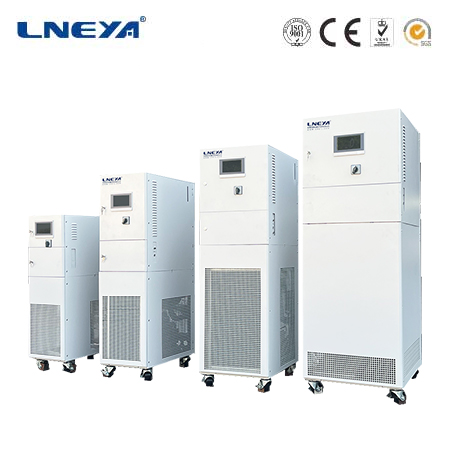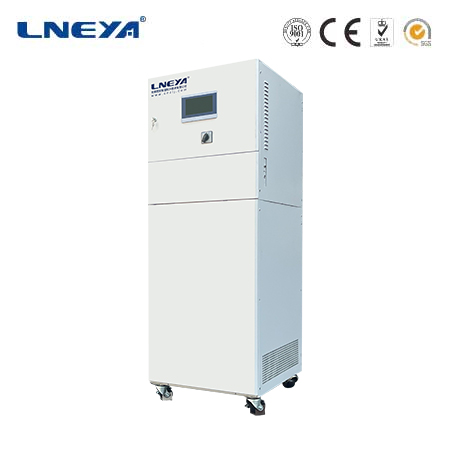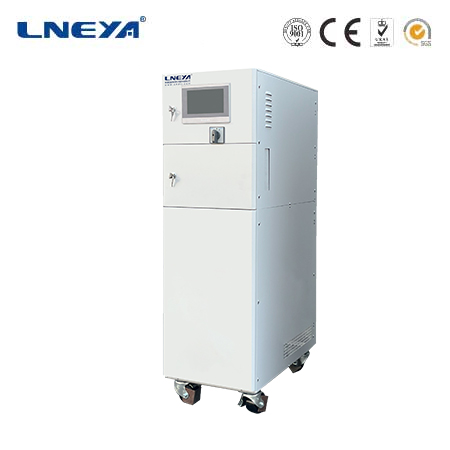dc air conditioning
DC (Direct Current) air conditioning represents a significant advancement in the field of climate control. Unlike traditional air – conditioning systems that primarily operate on alternating current (AC), DC air conditioners utilize direct – current power. This fundamental difference in power source enables DC air conditioners to offer enhanced performance, energy efficiency, and operational flexibility, making them increasingly popular in various settings. Understanding the intricacies of DC air conditioning, from its working mechanisms to its practical applications, is crucial for consumers, engineers, and industry professionals seeking to make informed decisions about cooling solutions.

Working Principles
Power Source and Conversion
DC air conditioners operate on direct – current electricity, which can be sourced from various places. One common source is solar panels, as they generate DC power directly. In cases where the main power grid supplies AC, an inverter is used to convert the AC power into DC. This conversion process allows for more precise control over the electrical components of the air – conditioning system.
Compressor and Fan Operation
The compressor is a key component in any air – conditioning system, and in DC air conditioners, it benefits significantly from the use of DC power. DC compressors can be equipped with variable – speed drives, also known as inverter technology. These drives enable the compressor to adjust its speed according to the cooling load. For example, when the room temperature is close to the set temperature, the compressor can run at a lower speed, consuming less energy. In contrast, during peak cooling demand, it can ramp up the speed to quickly cool the space.
Similarly, DC fans in the air – conditioning unit can also operate at variable speeds. This feature allows for better control of air circulation, ensuring that the cooled air is distributed evenly throughout the room while minimizing energy consumption. The ability to vary the speed of both the compressor and fans based on real – time cooling needs is a major advantage of DC air conditioning systems.
DC vs. AC Air Conditioning
Energy Efficiency
DC air conditioning systems are generally more energy – efficient than their AC counterparts. AC compressors typically operate at a fixed speed, cycling on and off to maintain the desired temperature. This on – off cycling results in higher energy consumption as the compressor has to use a significant amount of energy to start up each time. In contrast, DC compressors with variable – speed drives can modulate their speed, running continuously at a lower speed to meet the cooling demand. This continuous, variable – speed operation reduces energy waste and lowers overall power consumption.
Electrical Losses
AC power transmission involves more electrical losses due to the need for frequent conversion between different voltage levels and the characteristics of AC current. DC power, on the other hand, experiences fewer losses during transmission, especially in shorter – distance applications. In DC air conditioners, the direct use of DC power reduces the complexity of electrical systems and minimizes energy losses associated with power conversion and distribution.

Control and Flexibility
DC air conditioners offer greater control and flexibility. The variable – speed functionality of DC components allows for more precise temperature control. Users can set the temperature more accurately, and the system can maintain that temperature with less fluctuation. Additionally, DC systems can be more easily integrated with renewable energy sources like solar panels, providing a more sustainable and self – sufficient cooling solution. AC systems, while still widely used, often lack this level of integration and flexibility when it comes to alternative energy sources.
Types of DC Air Conditioning Systems
DC Mini – Split Air Conditioners
DC mini – split systems are a popular choice for residential and small – commercial applications. They consist of an outdoor unit that houses the compressor and condenser and one or more indoor units that contain the evaporator and fan. The DC technology in these systems enables quiet operation, high energy efficiency, and precise temperature control. Each indoor unit can be independently controlled, allowing for zonal cooling and energy savings by cooling only the occupied areas.
DC – Powered Central Air Conditioning
For larger commercial and industrial buildings, DC – powered central air – conditioning systems are available. These systems use DC compressors and fans in the central air – handling units to distribute cooled air throughout the building via a network of ducts. The variable – speed capabilities of DC components in central systems optimize energy usage by adjusting the cooling output based on the overall cooling load of the building. They can also be integrated with building management systems for enhanced control and monitoring.
Solar – Powered DC Air Conditioners
Solar – powered DC air conditioners are a sustainable option that directly utilizes the DC power generated by solar panels. These systems are especially beneficial in off – grid locations or areas with high electricity costs. The excess power generated by the solar panels during the day can be stored in batteries for use during periods of low sunlight or at night. This combination of solar power and DC air – conditioning technology reduces reliance on the grid and significantly cuts down on energy bills while minimizing the environmental impact.
Advantages of DC Air Conditioning
Energy Savings
As mentioned earlier, the variable – speed operation of DC compressors and fans leads to substantial energy savings. By running at the optimal speed to meet the cooling demand, DC air conditioners consume less power compared to traditional AC systems. This not only reduces electricity bills for users but also contributes to overall energy conservation and a lower carbon footprint.
Quiet Operation
DC air conditioners tend to operate more quietly than AC systems. The smooth, variable – speed operation of DC components reduces mechanical vibrations and noise. This makes them ideal for use in bedrooms, offices, and other noise – sensitive environments where a peaceful atmosphere is desired.
Longevity and Durability
The reduced on – off cycling and more consistent operation of DC air – conditioning components contribute to their longer lifespan. Since the compressor and other parts do not experience the stress of frequent starts and stops, they are less prone to wear and tear. This results in fewer breakdowns and lower maintenance costs over the lifetime of the system.
Compatibility with Renewable Energy
DC air conditioners are highly compatible with renewable energy sources such as solar and wind. The direct – current power output of these sources can be easily integrated with DC air – conditioning systems without the need for complex and energy – consuming conversion processes. This compatibility promotes the use of clean energy for cooling, enhancing the sustainability of buildings and reducing dependence on fossil – fuel – based electricity.
Applications of DC Air Conditioning

Residential Use
In homes, DC air conditioners are increasingly being adopted for their energy – saving and comfort – enhancing features. DC mini – split systems offer flexible cooling solutions, allowing homeowners to cool individual rooms or zones as needed. They are also suitable for retrofit projects in older homes, providing an energy – efficient upgrade to existing cooling systems. Additionally, the quiet operation of DC air conditioners ensures a comfortable living environment, especially in bedrooms and living rooms.
Commercial Use
Commercial buildings, such as offices, retail stores, and hotels, can benefit greatly from DC air – conditioning systems. DC – powered central air – conditioning systems can be customized to meet the specific cooling requirements of large commercial spaces. The energy – saving capabilities of these systems help businesses reduce operating costs, while the precise temperature control creates a comfortable environment for employees, customers, and guests. Moreover, the compatibility with renewable energy sources allows commercial establishments to showcase their commitment to sustainability.
Industrial Use
In industrial settings, maintaining optimal temperature and humidity levels is crucial for the proper functioning of equipment and the quality of products. DC air – conditioning systems are used in factories, warehouses, and data centers to cool machinery, control manufacturing processes, and protect sensitive electronic equipment. The variable – speed operation and high – efficiency performance of DC systems ensure reliable cooling even in demanding industrial environments.
Installation and Maintenance
Installation Considerations
When installing a DC air – conditioning system, several factors need to be considered. For solar – powered DC systems, the proper placement of solar panels to maximize sunlight exposure is essential. In all DC air – conditioning installations, ensuring correct electrical connections and proper sizing of the system based on the cooling load of the space are critical. Professional installation is recommended to ensure the system operates safely and efficiently.
Maintenance Requirements
Regular maintenance is key to keeping DC air – conditioning systems in good working condition. This includes cleaning or replacing air filters regularly to ensure proper air circulation and prevent dust and debris from affecting the system’s performance. Checking and cleaning the condenser coils (in outdoor units) and evaporator coils (in indoor units) helps maintain efficient heat transfer. Additionally, periodic inspections of electrical connections, refrigerant levels, and the operation of the compressor and fans are necessary to identify and address any potential issues early.
Future Trends
Integration with Smart Home Technology
The future of DC air conditioning lies in its integration with smart home technology. DC air – conditioning systems can be connected to smart thermostats and home automation systems, allowing users to control the temperature remotely via smartphones or voice – activated assistants. These smart systems can also analyze usage patterns and adjust the cooling settings automatically to optimize energy consumption.
Advancements in Inverter Technology
Continued advancements in inverter technology will further enhance the performance of DC air conditioners. Newer inverters will enable even more precise speed control of compressors and fans, resulting in improved energy efficiency and quieter operation. Research is also focused on developing more efficient and cost – effective inverter components to make DC air – conditioning systems more accessible.
Development of Sustainable Refrigerants
As environmental concerns grow, the development of more sustainable refrigerants for DC air – conditioning systems is a significant trend. Manufacturers are exploring alternatives to traditional refrigerants that have high global warming potential, aiming to create more eco – friendly cooling solutions without sacrificing performance.
In conclusion, DC air conditioning represents a revolutionary step forward in the field of climate control. With its numerous advantages, diverse applications, and promising future trends, DC air – conditioning technology is set to play an increasingly important role in meeting the cooling needs of residential, commercial, and industrial users while promoting energy efficiency and environmental sustainability.
Related recommendations
industrial water cooler manufacturers
479Industrial Water Cooler Manufacturers: Driving Efficiency in Temperature ControlIndustrial water cooler manufacturers play a critical role in providing reliable and efficient cooling solutions for...
View detailscold water chillers
471Cold Water Chillers: Efficient Cooling for Diverse Industries Cold water chillers are vital components in temperature control systems, used across a variety of industries for cooling processes,...
View detailsglycol chiller systems
340Glycol Chiller Systems: A Comprehensive OverviewGlycol chiller systems are specialized cooling systems that utilize glycol - based solutions as secondary coolants to transfer heat and maintain de...
View detailscooler cooling
435Introduction to Chiller Cooling SystemsChiller cooling systems are essential for maintaining comfortable temperatures in commercial buildings, industrial processes, and data centers. These systems...
View details
 LNEYA Thermal Test Chillers
LNEYA Thermal Test Chillers





HelloPlease log in